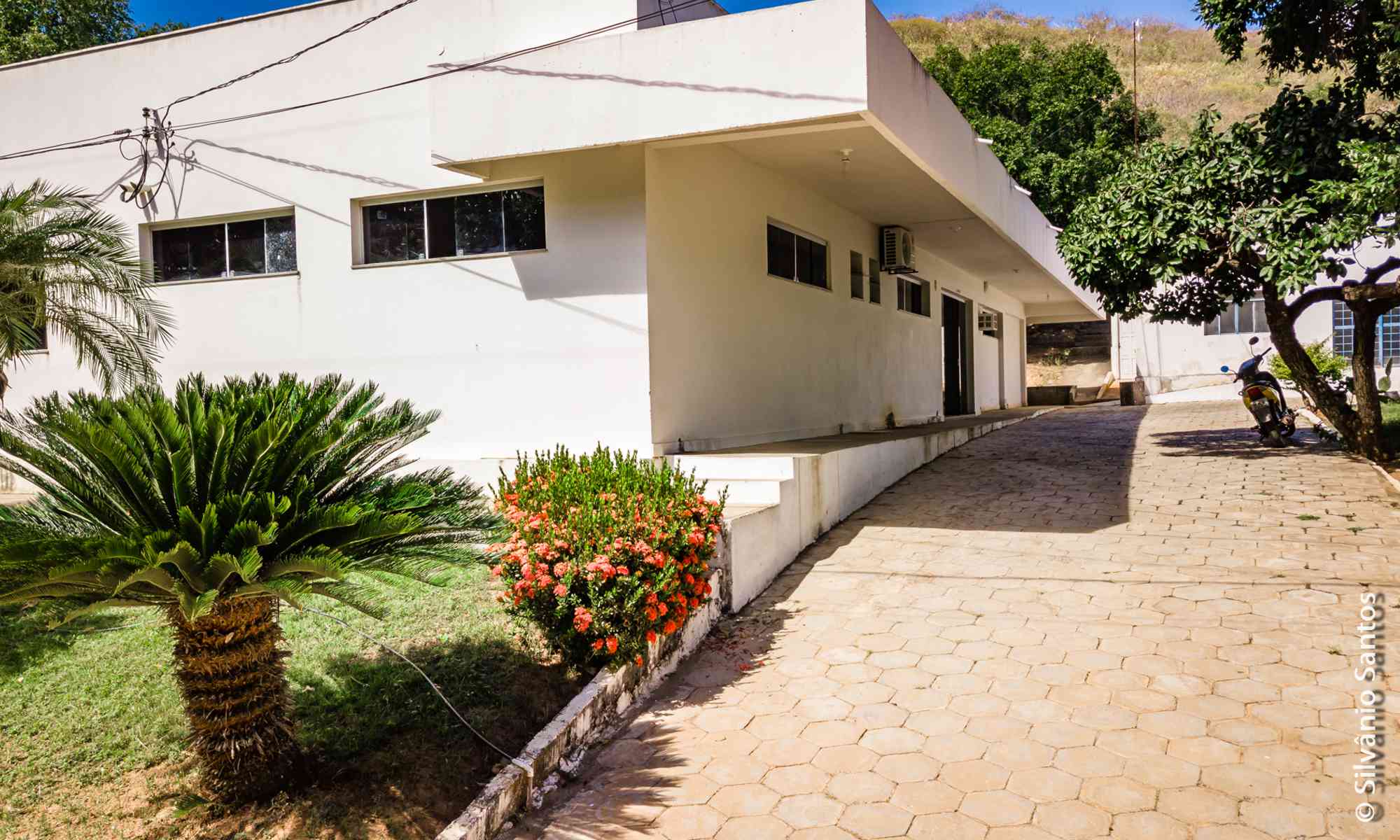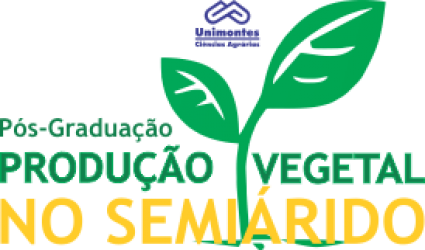- Version
- Download 26
- File Size 438.75 KB
- Create Date 14/06/2021
- Download
ANDRADE, Leandro Fernandes. Bactérias endofíticas de bananeira “Prata-Anã”: fixação de nitrogênio, solubilização de fosfato de cálcio e produção de ácido indol-3-acético. 2012. 67 p. Dissertação (Mestrado em Produção Vegetal no Semiárido) – Universidade Estadual de Montes Claros, Janaúba, 2012.
As bactérias endofíticas têm mostrado grande potencial para uso biotecnológico, com destaque no incremento da produtividade de espécies vegetais por meio da fixação de nitrogênio, solubilização de fósforo e produção de reguladores de crescimento. A associação dessas bactérias com as plantas pode reduzir a necessidade do uso de insumos agrícolas nitrogenados, bem como potencializar o uso de insumos fosfatados, promovendo, ainda, maior desempenho das plantas devido à síntese de fitormônios. Com isso, o objetivo do presente trabalho foi avaliar a fixação biológica de nitrogênio, a capacidade de solubilização de fosfato e a produção de ácido indol-3-acético (AIA) por bactérias endofíticas associadas a raízes de bananeira “Prata-Anã”. Para determinar a fixação biológica de nitrogênio, foram selecionados 24 isolados que apresentaram o gene nifH, em delineamento inteiramente casualizado, com três repetições. Utilizou-se o crescimento dos isolados selecionados em meio livre de nitrogênio NFb, quando avaliou-se a presença de película aerotáxica típica. Os resultados foram submetidos a estudos de distribuição de frequência. Meio suplementado com fosfato de cálcio tribásico foi utilizado para determinar o potencial de solubilização de 40 isolados de bactérias endofíticas, sendo a eficiência de solubilização determinada pela razão entre o diâmetro do halo de solubilização e o diâmetro da colônia bacteriana. A produção de AIA foi detectada pelo crescimento bacteriano em meio líquido TSA 10% suplementado com L- triptofano. As bactérias que sintetizaram AIA em meio TSA 10% com L- triptofano foram selecionadas para ensaio de produção de AIA em meio TSA 10% sem suplementação de L-triptofano. A presença de AIA foi determinada pela reação do meio TSA 10% com reagente ácido-férrico e sua concentração foi determinada em espectrofotometria pela absorbância a 530 nm de comprimento de onda. Os ensaios foram realizados em delineamento inteiramente casualizados com 40 tratamentos e três repetições. Os resultados foram submetidos à análise de variância e, quando apresentaram diferença significativa pelo teste F, foram submetidos ao teste de Scott-Knott a 5% de probabilidade. Dentre os isolados selecionados para ensaio de fixação biológica de nitrogênio, 83% apresentaram a película aerotáxica em meio livre de N, sendo que 67% destes isolados são do gênero Bacillus. Dentre os 40 isolados avaliados para o potencial de solubilização de fosfato, 37,5% apresentaram halo de solubilização. O isolado EB-53 (Lysinibacillus sp.) apresentou alta solubilização, enquanto 73% dos isolados solubilizadores apresentaram baixa solubilização. A síntese de AIA foi detectada entre os isolados, quando 40% deles apresentaram a capacidade de sintetizar AIA na presença de L-triptofano e destes, 17,5% sintetizaram-no na ausência de L-triptofano. O isolado EB-40 (Bacillus sp.) apresentou o maior teor de AIA (47,88 µg.mL-1 ) em meio suplementado com L- triptofano, apresentando, também, capacidade de sintetizar AIA na ausência de L-triptofano. Os isolados EB-126 (Bacillus subtilis) e EB-47 (Bacillus sp.) apresentaram capacidade simultânea para fixação de N, solubilização de fosfato e produção de AIA in vitro.
Palavras-chave: Musa spp., ácido indol-3-acético, fosfato de cálcio tribásico, diazotrófica, Bacillus sp.
Endophytic bactéria of “Prata-Anã” banana tree: nitrogen fixation, calcium phosphate solubilization and production of indol-3-acetic acid
The endophytic bacteria have been showing great potential for biotechnological use, with prominence in the increment of the productivity of plant species by the nitrogen fixation, phosphorus solubilization and production of growth regulators. The association of those bacteria with the plants can reduce the need the use of nitrogen fertilizers, as well as to potentiate the use of phosphate fertilizers, promoting, also, larger acting of the plants due to the growth regulators’ synthesis. Thus, the objective of the present work was to evaluate the nitrogen biological fixation, the capacity of phosphate solubilization and the production of indol-3-acetic acid (IAA) by endophytic bacteria associated to roots of "Prata- Anã" banana tree. To determine the nitrogen biological fixation, 24 isolates that presented nifH gene were selected, in entirely randomized design, with three repetitions. The selected isolates’ growth was used in medium free from nitrogen NFb, when the presence of pellicle formation was evaluated. The results were submitted to studies of frequency distribution. Medium supplemented with calcium phosphate tribase was used to determine the solubilization potential of 40 isolates of endophytic bacteria, being the solubilization efficiency determined by the ratio between the solubilization halo diameter and the bacterial colony diameter. The production of IAA was detected by the bacterial growth in 10% TSA medium supplemented with L-tryptophan. The bacteria that synthesized IAA in 10% TSA medium with L-tryptophan were selected for essay of production of IAA in 10% TSA medium without supplementation of L- tryptophan. The presence of IAA was determined by the reaction of 10% TSA medium with acid-ferric reagent and its concentration was determined in spectrophotometry by the absorbance to 530 nm of wave length. The essays were carried out in entirely randomized design with 40 treatments and three repetitions. The results were submitted to analysis of variance and, when they presented significant difference by the F test, they were submitted to Scott-Knott test to 5% of probability. Among the selected isolates for essay of biological nitrogen fixation, 83% presented the pellicle formation in N free medium, from which 67% are of the Bacillus genus. Amongst 40 isolates evaluated for the potential of phosphate solubilization, 37.5% showed solubilization halo. The isolate EB-53 (Lysinibacillus sp.) presented high solubilization, while 73% of the solubilizing isolates showed low one. The IAA synthesis was detected among the isolates, when 40% of them presented the capacity to synthesize IAA in the presence of L-tryptophan and of those, 17,5% synthesized it in the absence of L-tryptophan. The isolate EB-40 (Bacillus sp.) presented the largest IAA content (47.88 µg.mL-1 ) in medium supplemented with L-tryptophan, presenting, also, capacity to synthesize IAA in the absence of L-tryptophan. The isolates EB-126 (Bacillus subtilis) and EB-47 (Bacillus sp.) presented simultaneous capacity for fixation of N, phosphate solubilization and production of IAA in vitro
Keywords: Musa spp., indol-3-acetic acid, calcium phosphate tribase, diazotrophic, Bacillus sp.

